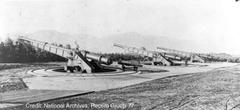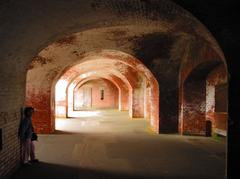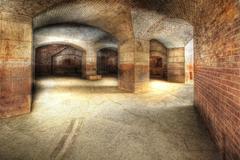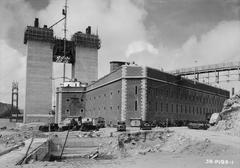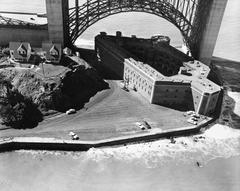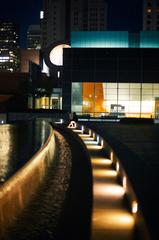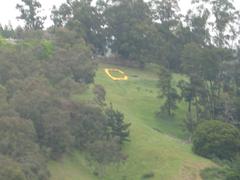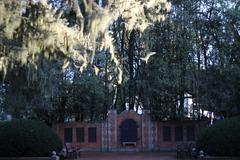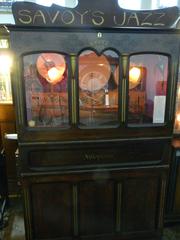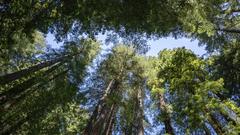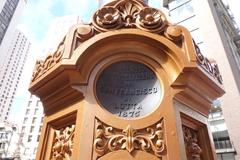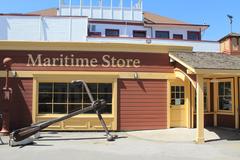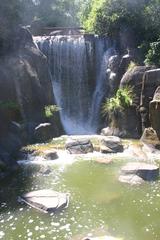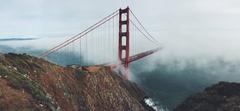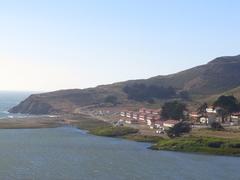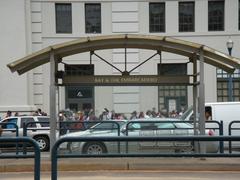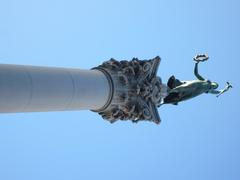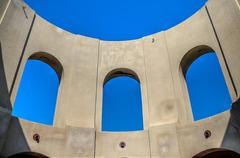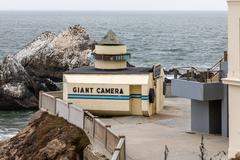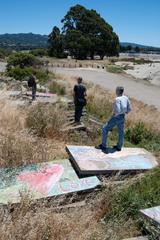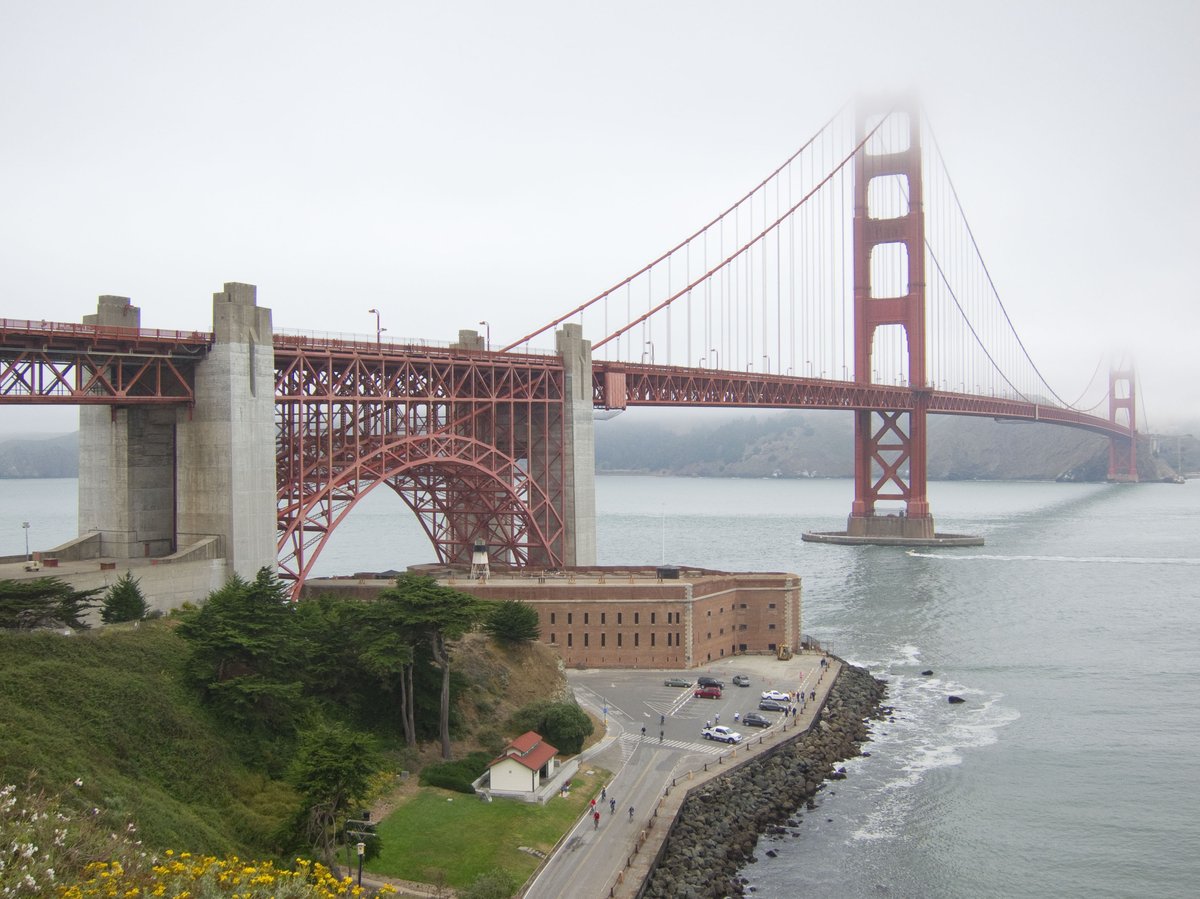
Comprehensive Guide to Visiting Fort Point, San Francisco, United States
Date: 18/07/2024
Introduction
Fort Point, a historic gem nestled at the southern side of the Golden Gate Bridge in San Francisco, offers a compelling journey into America’s military past. Constructed between 1853 and 1861 by the United States Army Corps of Engineers, Fort Point was a pivotal defense structure during the California Gold Rush era, designed to protect San Francisco Bay from naval attacks. Its architectural significance stems from its design, influenced by the Third System of coastal fortifications, characterized by its masonry construction and multi-tiered gun emplacements. The fort’s robust construction, involving over 30 million bricks and seven-foot-thick walls, made it a formidable coastal defense (National Park Service).
Throughout its history, Fort Point has played various military roles, notably during the American Civil War, where it was fully garrisoned to defend the bay, despite never seeing combat. The fort’s strategic importance waned post-Civil War due to advancements in military technology, leading to its eventual decline as a military installation. However, its historical significance saved it from demolition in the late 19th century, and it was later designated a National Historic Site in 1933 (Library of Congress).
The integration of Fort Point with the Golden Gate Bridge in the 1930s, thanks to Chief Engineer Joseph Strauss’s redesign, preserved this historical monument, allowing the bridge to pass above without causing structural damage. Today, Fort Point stands as a testament to American engineering and military history, managed by the National Park Service as part of the Golden Gate National Recreation Area. Visitors can explore its well-preserved architecture and learn about its rich history through various educational programs and guided tours (Golden Gate National Parks Conservancy).
Table of Contents
- Introduction
- Early Conception and Construction
- Civil War Era
- Post-Civil War and Decline
- 20th Century and Preservation Efforts
- Integration with the Golden Gate Bridge
- Modern-Day Significance
- Visitor Information
- Travel Tips and Nearby Attractions
- FAQ
- Conclusion
Early Conception and Construction
Fort Point, located at the entrance to San Francisco Bay, has a history dating back to the mid-19th century. Constructed between 1853 and 1861 by the United States Army Corps of Engineers, its primary purpose was to protect San Francisco Bay against potential naval attacks during the California Gold Rush era.
The fort’s design was influenced by the Third System of coastal fortifications, characterized by masonry construction and multi-tiered gun emplacements. Fort Point was designed to mount 126 cannons, making it one of the most formidable coastal defenses of its time. The fort’s construction involved over 30 million bricks, and its walls were designed to be seven feet thick to withstand cannon fire (National Park Service).
Civil War Era
During the American Civil War (1861-1865), Fort Point played a crucial role in the Union Army’s defense strategy. Although it never saw combat, it was fully garrisoned and ready to defend the bay. The fort’s strategic location allowed it to control the entrance to San Francisco Bay, making it a key military asset.
The fort’s armament included Rodman guns, which could fire a 440-pound projectile over a distance of three miles, providing a formidable deterrent to potential attackers (California State Military Museum).
Post-Civil War and Decline
After the Civil War, the strategic importance of Fort Point declined due to advances in military technology, such as rifled artillery and ironclad warships. By the late 19th century, Fort Point was largely abandoned as a military installation.
In 1886, the Army considered demolishing the fort to make way for a new coastal defense system. However, it was spared due to its historical significance and the high cost of demolition. Instead, new gun batteries were constructed on the bluffs above the fort (Golden Gate National Parks Conservancy).
20th Century and Preservation Efforts
In the early 20th century, Fort Point saw brief military activity during World War I and World War II. During World War I, it served as a barracks for soldiers guarding the Golden Gate. In World War II, it was equipped with anti-aircraft guns to defend against potential Japanese air raids.
Despite these periods of activity, Fort Point’s primary role in the 20th century was as a historical monument. In 1933, it was designated a National Historic Site, recognizing its significance in American military history (Library of Congress).
Integration with the Golden Gate Bridge
One of the most significant events in Fort Point’s history occurred in the 1930s with the construction of the Golden Gate Bridge. The original plans called for the fort’s demolition to make way for the bridge’s southern anchorage. However, Chief Engineer Joseph Strauss recognized its historical value and redesigned the bridge to preserve it.
The redesign included constructing an arch over the fort, allowing the bridge to pass above without causing structural damage. This innovative solution preserved Fort Point and created one of the most iconic architectural juxtapositions in the world (Golden Gate Bridge Highway and Transportation District).
Modern-Day Significance
Today, Fort Point stands as a testament to the engineering and military history of the United States. It is managed by the National Park Service as part of the Golden Gate National Recreation Area. The fort is open to the public and offers various educational programs, including guided tours, historical reenactments, and exhibits on the fort and the Golden Gate Bridge’s history.
Fort Point’s unique location beneath the Golden Gate Bridge provides visitors with stunning views of the bridge, the bay, and San Francisco. The fort’s well-preserved architecture and historical significance make it a must-visit destination for history enthusiasts and tourists alike (National Park Service).
Visitor Information
- Visiting Hours: Fort Point is open Friday through Sunday, from 10 AM to 5 PM. Check the National Park Service website for any changes or special events.
- Tickets: Admission to Fort Point is free. Donations are welcome to support preservation efforts.
- Accessibility: The fort is accessible to visitors with disabilities. There are ramps and elevators to help navigate the different levels.
Travel Tips and Nearby Attractions
- Travel Tips:
- Wear comfortable shoes, as there is a lot of walking involved.
- Bring a camera for the stunning views, and dress in layers as the weather can be unpredictable.
- Nearby Attractions:
- Explore the Golden Gate Bridge, Crissy Field, the Presidio, and the San Francisco Maritime National Historical Park for a full day of sightseeing.
FAQ
- What are the visiting hours for Fort Point? Fort Point is open Friday through Sunday, from 10 AM to 5 PM.
- Do I need tickets to visit Fort Point? Admission is free; no tickets are required.
- Is Fort Point accessible? Yes, the fort is accessible, with ramps and elevators available.
- What nearby attractions can I visit? Nearby attractions include the Golden Gate Bridge, Crissy Field, the Presidio, and the San Francisco Maritime National Historical Park.
Conclusion
Fort Point’s history is a rich tapestry of military strategy, architectural innovation, and historical preservation. From its construction in the mid-19th century to its role in defending San Francisco Bay, the fort has played a significant role in the history of the United States. Today, it stands as a symbol of the nation’s military heritage and a testament to the importance of preserving historical landmarks for future generations. Plan your visit to Fort Point to experience this remarkable piece of history firsthand.
For more information, follow us on social media and check out our other related posts.
References
- National Park Service. (n.d.). Fort Point National Historic Site. Retrieved from https://www.nps.gov/fopo/learn/historyculture/index.htm
- Library of Congress. (n.d.). Fort Point National Historic Site. Retrieved from https://www.loc.gov/item/ca0595/
- Golden Gate National Parks Conservancy. (n.d.). Fort Point National Historic Site. Retrieved from https://www.parksconservancy.org/park/fort-point-national-historic-site
- California State Military Museum. (n.d.). Fort Point. Retrieved from http://www.militarymuseum.org/FtPoint.html
- Golden Gate Bridge Highway and Transportation District. (n.d.). Bridge Construction. Retrieved from https://www.goldengate.org/bridge/history-research/bridge-construction/

